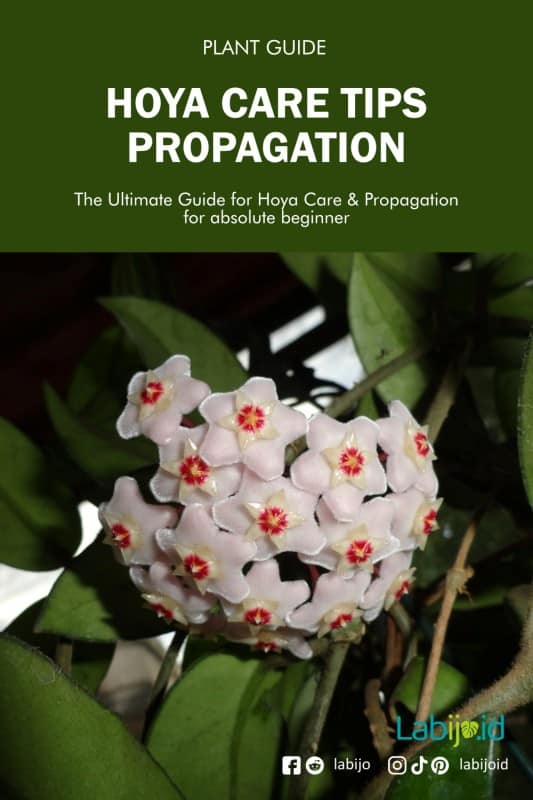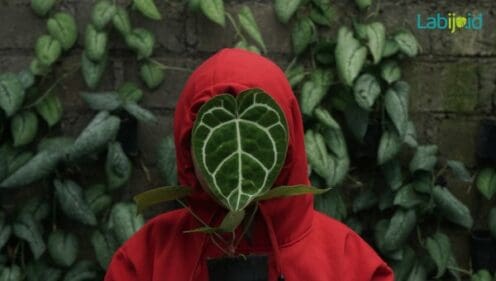Looking for hoya care tips and propagation? You’ve arrived at the right place! In this post, we’ll show you how we care for over 1,000 rare hoya plants in our nursery.
Talking about houseplants, Hoya is one of the favorites among the houseplant community. It is known for being easy to take care of indoor houseplants, relatively easy to propagate, and having beautiful blooms with nice scents. As a result, Hoya comes in over 700 varieties, so you’ll never be bored with them.
With such a diverse range of products, Hoya may be able to do more business with us than we had anticipated. They are possibly hanging in your aunt’s or grandma’s kitchen as hanging plants facing the window. Their main characteristics are hard and waxy leaves and long tendrils.
Even though we are probably familiar with Hoya, many of its members are still unknown despite their similarities. The easiest way to know what their varieties are is when they are blooming, which is pretty rare. Today, we’ll show you some exceptionally beautiful rare Hoya.
Hoya Coronaria
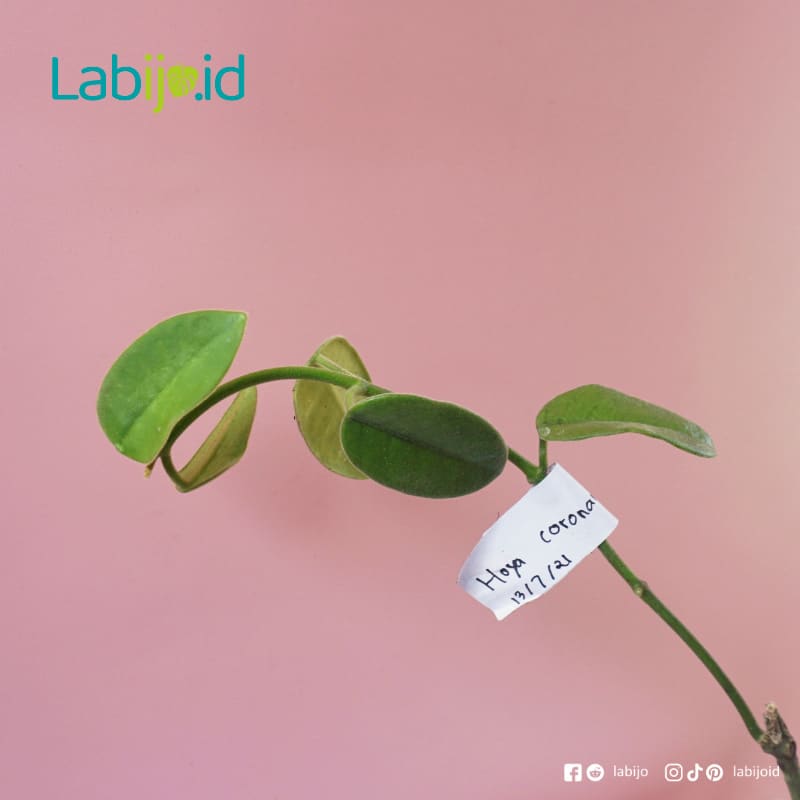
Hoya coronaria comes from Borneo. They have green foliage with a hairy texture and vines in a big tree in their habitat. Hoya coronaria blooms begin as a white star shape and mature into a red star.
Hoya Verticillata
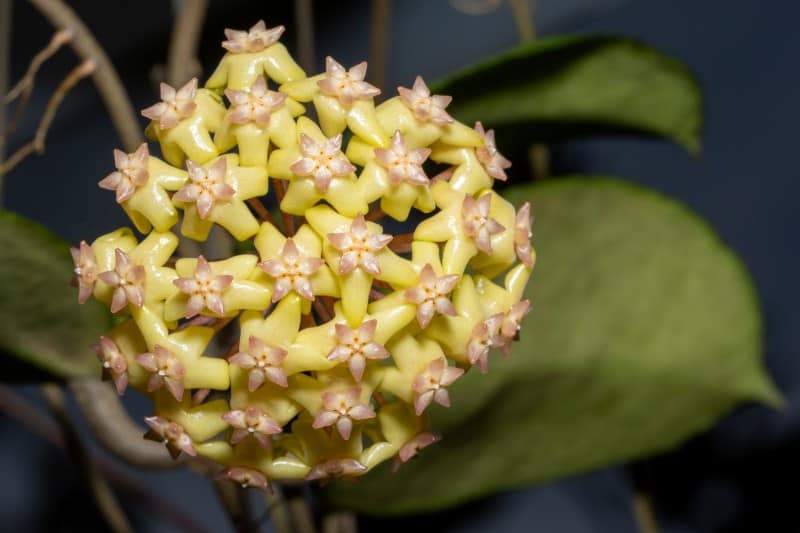
Their foliage is thick and waxy. The white flowers with burgundy centers are their famous flowers. At first glance, it looks like the Japanese sakura logo. Do you want to have Hoya Verticillata?
Hoya Sp
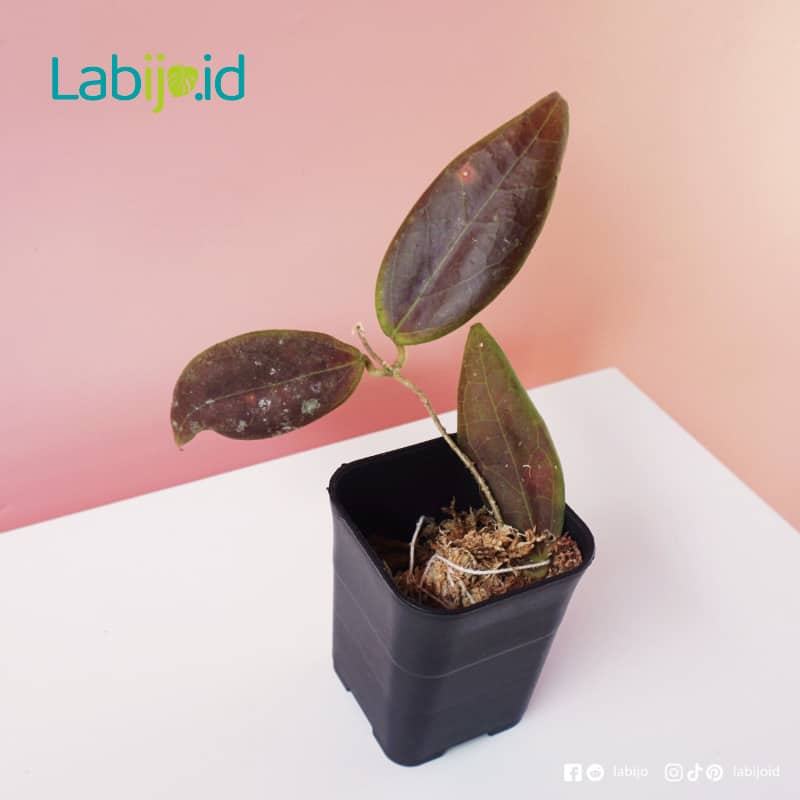
Hoya sp is the best choice if you like burgundy foliage. They are easier to spot than others due to their coloration and thickness.
Take Care of Hoya Plants
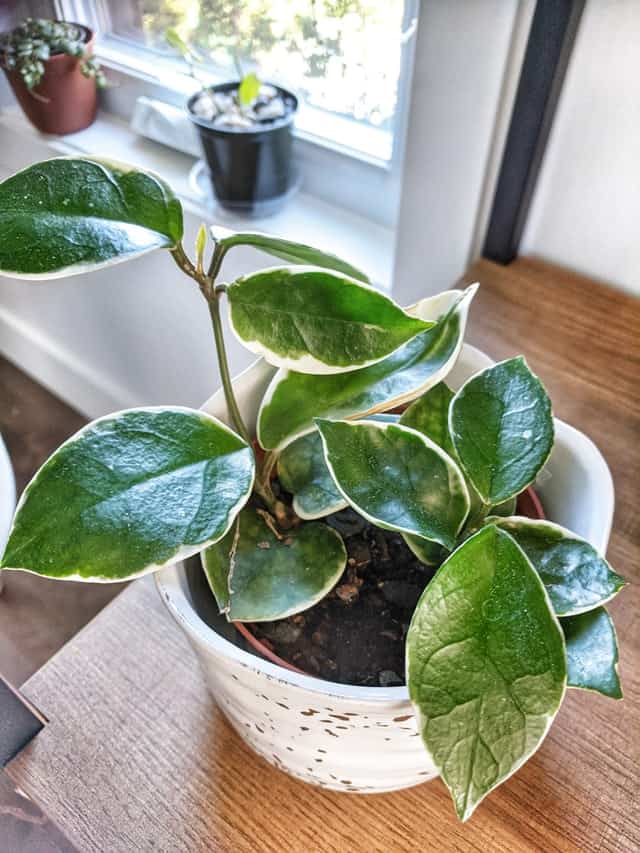
Taking care of hoyas is not hard; they are rare, low-maintenance plants with beautiful flowers when blooming. Some of them have sweet fragrances. In this post, We want share with you, how we take care of hoya plants in our nursery
Besides all mentioned above, there are some general tips for taking care of Hoya that can be applied to any hoya you have.
Hoyas require good drainage soil. For terrestrial Hoya, drainage pots are important. When your pot doesn’t drain well, the soil tends to be soggy and it will only cause your Hoya to rot. You don’t want it, right? Always use well-drained soil.
Always mind the distance between your Hoya. Their tendrils will tangle with each other when they get too close. Whenever the tendrils start to tangle, it will make them grow slower and harder to bloom.
Don’t cut the wooden tendril. When your hoya is about to bloom, it will grow brown wooden tendrils. It is different from new, young tendrils. This wooden tendril will be a place for the flowers to bloom.
Limp hoya is not okay. You know your hoya is not okay when their sturdy leaf starts to limp and wilt gradually. It can need more water or too much sun. Always pay attention to what they need.
Taking care of Hoya is not as hard as we might think. Always give them attention to see what they need, especially when they just arrived and need to acclimate to a new environment.
Get your Hoya in our shop today or join our newsletter to get to know first what’s hot in our nursery.
Any species of Hoya you have, please be mindful while watering them. Overwatering your Hoya will only cause root rot because Hoya roots can be sensitive when soaked in too much wet media.
Lighting
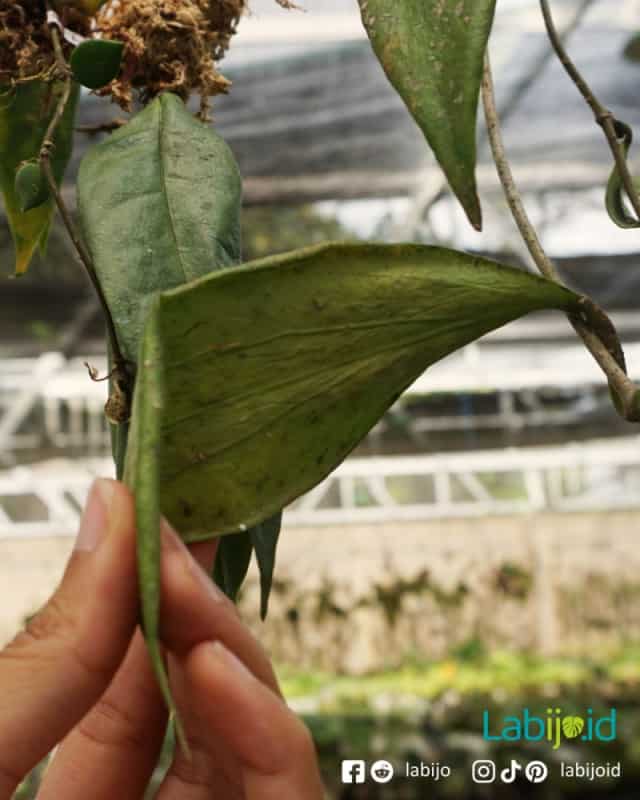
Always grown in diffused, indirect bright light, which mimics their natural habitat, where most hoyas grow in the shade of a large tree. Too much light will make their leaves burn and wilt.
Soil Mix
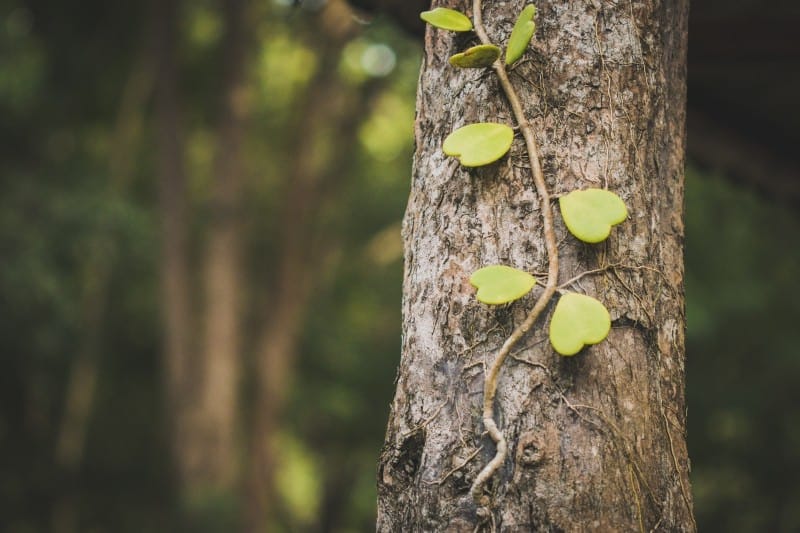
In general, hoya can be classified into two places where they live: epiphytic and terrestrial. Hoya Vittelina is epiphytic, which means it grows on the surfaces of other plants. On the other hand, terrestrial plants need real soil to grow, such as Hoya verticillata.
Consider the vine Hoya aff. Vittelina, which grows on large trees in the forest and can be hung in a piece of woods with a handful of sphagnum moss as “soil.” Sphagnum moss will likely hold water to keep your Hoya thriving.
Meanwhile, with terrestrial hoya like Hoya Verticillata, you can mix your soil. In our nursery, the common formulation is orchid bark, perlite, and houseplant soil with a ratio of 1:1:1. With this mixed, the soil is less solid and has a lot of aeration. Thus, make your hoya breathe more.
Some terrestrial hoyas will likely have sweet soil, where alkalinity is higher than regular soil. You can try to use clean, crushed eggshells to mix in your soil. These eggshells also help to improve the calcium content of your soil.
Watering Hoya
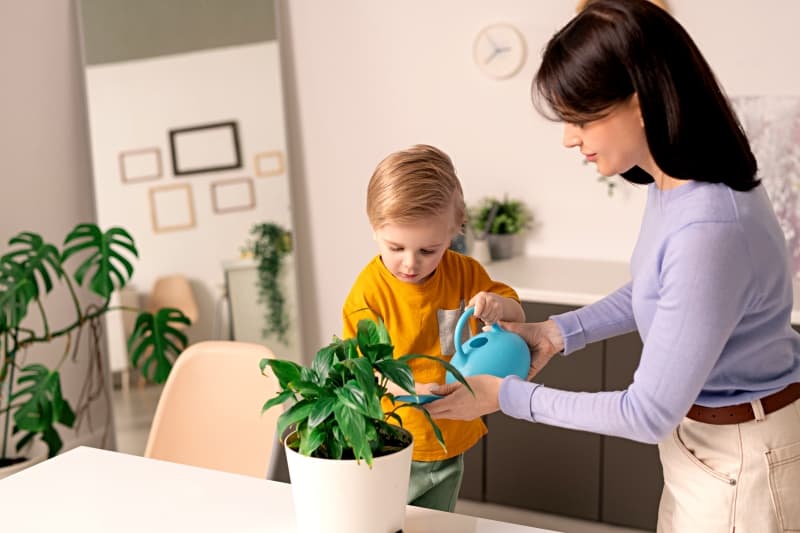
As previously stated, Hoya’s water requirements may differ from one another. For epiphytic hoya, since the sphagnum moss does not really hold the water, they tend to dry out easily. During hot days, you can water or spray your hoya more frequently.
Terrestrial hoya on other hand, you can have less watering since soil likely holds more water than but still sphagnum moss then you need to be careful to not overwater them.
Fertilizer and Pests
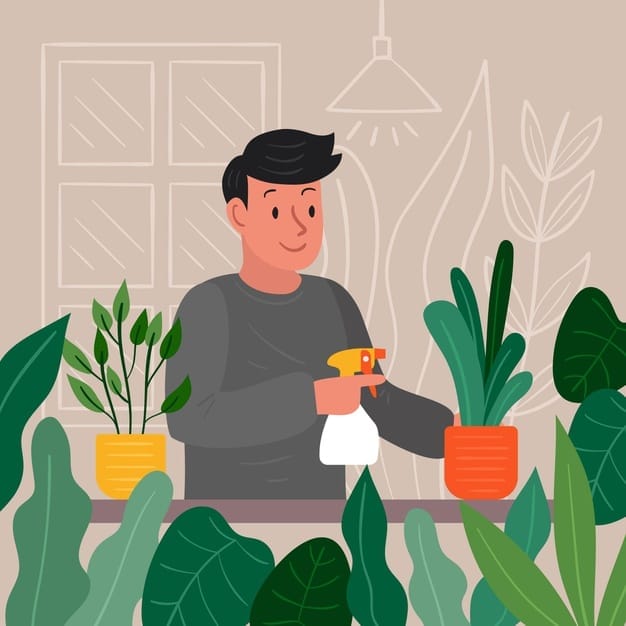
Hoya are considered easy plants that require little fertilizer and pest control. Always choose gentle fertilizer and follow the directions on how to use it to avoid overfertilizing. The best time to fertilize them is from spring to fall, when their potential growth is taking place. If you live in a place where you can have sun all year long, you can fertilize them all the year.
It rarely happens when Hoya gets any pests or diseases. You don’t have to worry about it too much. For prevention, you can clean their leaves regularly with a clean cloth and neem oil once a month.
How to get Hoya?
Hoya is relatively easy to find due to their popularity. In some cases, it is hard to find nurseries or garden centers that carry rare species. You can ask our team to get your Hoya varieties because we may have their stocks. Even if we couldn’t, we could help you find them.
Propagating Hoya
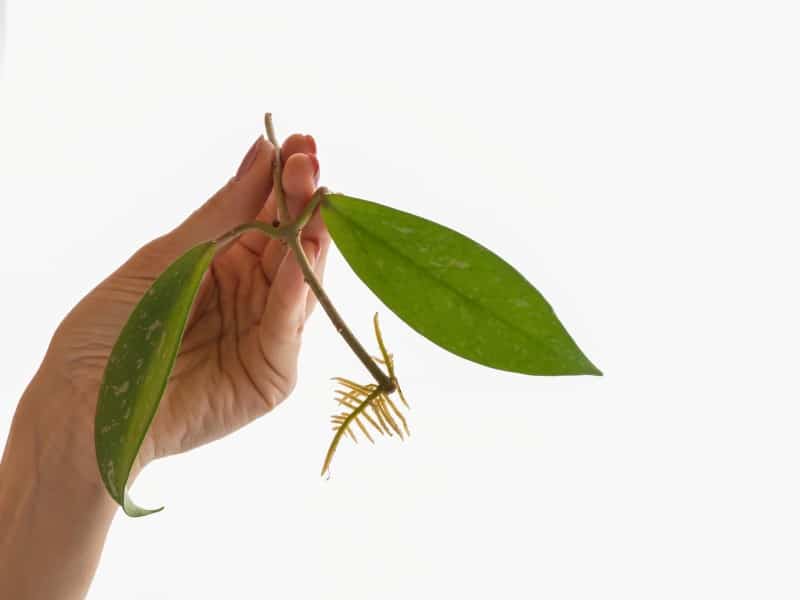
Propagating Hoya is easy since they have many nodes along their stem. Once you want to propagate them, make sure you still have one or two nodes on the stem. Once you cut them, they will produce white, clear, or even yellowish sap. It is normal; you don’t have to worry. You can clean it up or leave it be, doesn’t matter.
After the cut, you can put them directly into the water and wait for their roots to start to sprout. They will likely need 2-3 weeks, but it could be longer or faster depending on their varieties.
When the roots have grown sufficiently, they are ready to be placed in their new medium. If you use a pot, you can place them in a small pot. No need to worry since they only need a new pot after a few years.
